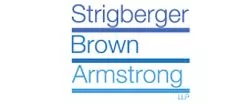Around 2 a.m. on a June 2011 night, the plaintiff decided to go skateboarding on an unlit recreational path at the South Humber Park for a cardio workout. He was not wearing a helmet or any protective gear. He was sober, alone and did not have a flashlight. He was familiar with the trail, having ridden his mountain bike on it often. He was also an experienced skateboarder. The plaintiff believed he would be able to see well enough along the trail and there were no signs posted warning of any visibility issues.
The City's Park is open to the public every day, 24 hours a day. There are no signs prohibiting trail use at night or warning of limited visibility. The trail, which begins in a grassy area, is initially covered in asphalt, before gradually sloping down into a wooded area. There is no artificial lighting on the trail. The City maintained the trail once a week.
After entering the treed portion of the trail, a canopy of trees eliminated all natural light at night. The wheels of the plaintiff's skateboard froze, possibly due to being jammed by debris / rough terrain that he was unable to see and avoid. The plaintiff was thrown from his skateboard. Amongst other injuries, he suffered a serious brain injury (left frontal contusion and right occipital fracture extending into the skull base). The plaintiff's expert accident reconstructionist provided evidence that the light on the trail went from 19 LUX (a measure of illumination) at the start, to between 2.5-7.0 LUX at the entrance to the trail, and ultimately to an undetectable level of LUX in the area where the accident occurred. The expert opined that the rapid change in illumination caused the plaintiff to fall from his skateboard.
The plaintiff sued the City for negligence and public nuisance. The City moved for summary judgment.
With respect to the negligence claim, the Court noted that the Occupiers' Liability Act imposes a lower standard of care when a person enters premises for the purpose of a recreational activity. In such instances, the occupier owes a duty to (i) not create a danger with the deliberate intent of doing harm / damage to the person or his property and (ii) to not act with reckless disregard of the presence of the person or his property. In other words, the higher positive duty for occupiers to take reasonable care of the premises does not apply.
To constitute reckless disregard, the evidence should show that the occupier knew or should have known that injury was likely to happen to a person present on the premises. It would require something beyond what could be anticipated by an ordinary person. That is, something unusual, inherently harmful or dangerous, like a "trap". The Court noted that it was not reckless for an occupier to fail to warn / fail to take steps to protect a person from what they would know and appreciate to be a common or usual danger on the premises.
The plaintiff argued that the City acted with reckless disregard by failing to employ signs about the rapid changes in lighting, by failing to light the trail for nighttime users, failing to close the park at night and post signage prohibiting nighttime use of the trail.
The Court disagreed. Anyone entering the trail at night would observe the slope/curve of the trail entering a wooded area, where it was foreseeable that the path would have twigs, stones and leaves typically found on a wooded pathway. Furthermore, the darkness of the trail leading into the woods on a summer night would be anticipated and not a surprise, such that no signage was needed. Finally, the City was not aware or made aware of any hazardous trail conditions in the year before the accident and had a system of regular inspection and maintenance in place.
With respect to the public nuisance claim, the Court noted that liability can arise where the defendant caused or created the nuisance if a duty was neglected permitting the nuisance to arise or where the defendant failed to remedy the nuisance within a reasonable time after becoming aware of its existence.
Ultimately, the Court found that keeping a forested park open at night is not a public nuisance. In an urban area, keeping a forested park open at night was in fact the opposite of a nuisance for both promoting health and the enjoyment of natural environments. There was therefore no genuine issue requiring a trial. The City's motion was granted.
When considering bringing a summary judgment motion in such cases, the defendant occupier should remember that the onus will switch to them to show there is no genuine issue requiring a trial that they acted with reckless disregard. This does not mean that the defendant occupier should rush to obtain an expert report as, considering the lower standard of care imposed on occupiers of recreational premises, the defendant occupier can be generally assured that common sense will prevail and that Courts are likely to take judicial notice of various key factors. In this case, the Court took judicial notice of the make-up of a wooded trail and the expectation of lowered illumination under a canopy of trees on a summer night. In fact, the Court commented that the plaintiff's expert accident reconstruction report was unnecessary as it merely "added some science to common sense".
See Karpouzis v. Toronto (City of), 2020 ONSC 143
The content of this article is intended to provide a general guide to the subject matter. Specialist advice should be sought about your specific circumstances.

